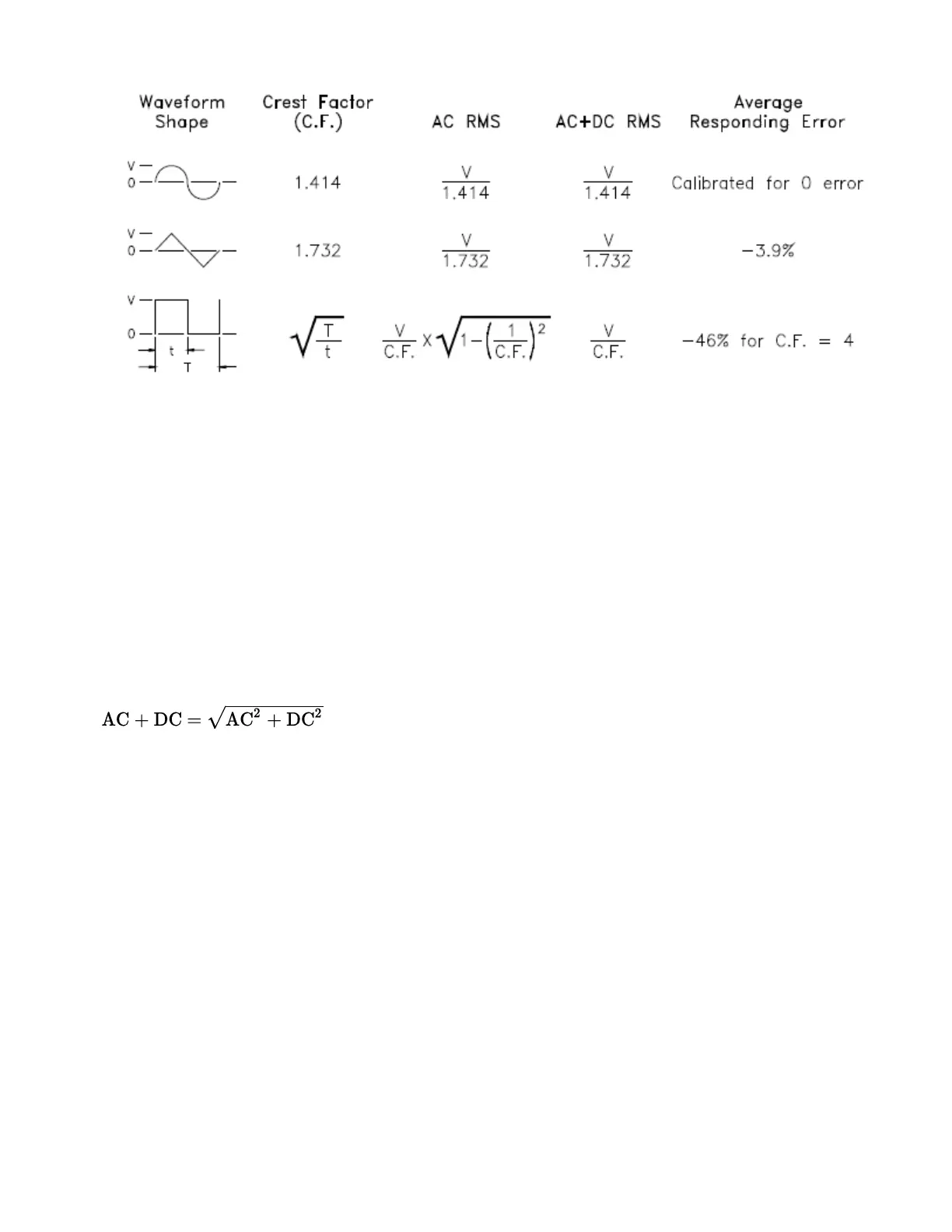The internal DMM’s AC voltage and AC current functions measure the ac-coupled true RMS value. This is in
contrast to the ac+dc true RMS value shown above. Only the “heating value” of the AC component of the
input waveform is measured (dc is rejected). For sinewaves, triangle waves, and square waves, the AC and
AC+DC values are equal since these waveforms do not contain a DC offset. Non-symmetrical waveforms,
such as pulse trains, contain DC voltages which are rejected by ac-coupled true RMS measurements.
An ac-coupled true RMS measurement is desirable in situations where you are measuring small AC signals
in the presence of large DC offsets. For example, this situation is common when measuring AC ripple
present on DC power supplies. There are situations, however, where you might want to know the ac+dc
true RMS value. You can determine this value by combining results from DC and AC measurements as
shown below. You should perform the DC measurement using at least 10 power line cycles of integration
for best AC rejection.
Making High-Speed AC Measurements
The internal DMM’s AC voltage and AC current functions implement three low-frequency filters. These fil-
ters allow you to trade-off low frequency accuracy for faster scanning speed. The fast filter settles in 0.12
seconds and is useful for measurements above 200 Hz. The medium filter settles in 1 second and is useful
for measurements above 20 Hz. The slow filter settles in 7 seconds and is useful for measurements above 3
Hz.
With a few precautions, you can perform AC measurements at speeds up to 100 readings per second (use
manual ranging to eliminate autoranging delays). By setting the preprogrammed channel settling delays to
zero, each filter will allow up to 100 channels per second. However, the measurement might not be very
accurate since the filter is not fully settled. In scanning applications where sample-to-sample levels vary
widely, the medium filter (20 Hz) will settle at 1 reading per second, and the fast filter (200 Hz) will settle at
10 readings per second.
If the sample-to-sample levels are similar, little settling time is required for each new reading. Under this
specialized condition, the medium filter (20 Hz) will provide reduced accuracy results at 5 readings per
second, and the fast filter (200 Hz) will provide reduced accuracy results at 50 readings per second.
Keysight DAQ970A User's Guide 199
4Measurement Tutorials

